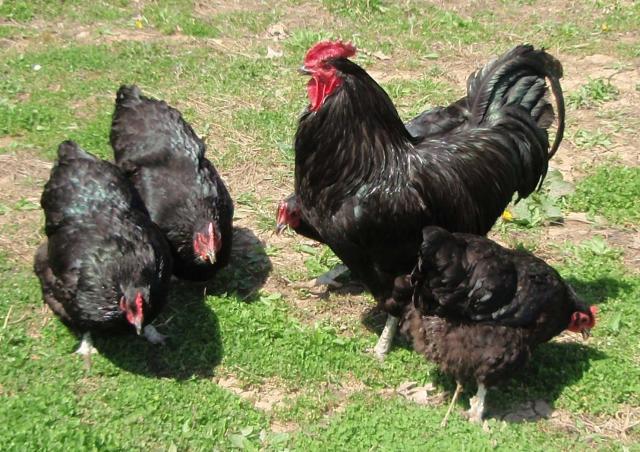The Livestock Conservancy (formerly The American Livestock Breeds Conservancy) lists breeds of livestock that are in danger of being lost.
http://www.livestockconservancy.org/index.php/heritage/internal/conservation-priority-list
What breed of chicken or other livestock would you breed and save, if you could, or if you are already?
Looking at the list of chicken breeds, I think I would save the threatened Java, which was used to create Rhode Island Red, Plymouth Rock, Jersey Giant, and probably other breeds.
The breed is recognized by the APA in black or mottled. But there are also white and auburn, which was used to create the Rhode Island Red.
"The Java is considered the second oldest breed of chicken developed in America (after the Dominique). Its ancestors were reputed to have come from the Far East, possibly from the isle of Java. Sources differ on the time of origin of the Java, but the breed was known to be in existence in America sometime between 1835 and 1850."
The Java is a breed that deserves to be saved.


http://www.livestockconservancy.org/index.php/heritage/internal/conservation-priority-list
What breed of chicken or other livestock would you breed and save, if you could, or if you are already?
Looking at the list of chicken breeds, I think I would save the threatened Java, which was used to create Rhode Island Red, Plymouth Rock, Jersey Giant, and probably other breeds.
The breed is recognized by the APA in black or mottled. But there are also white and auburn, which was used to create the Rhode Island Red.
"The Java is considered the second oldest breed of chicken developed in America (after the Dominique). Its ancestors were reputed to have come from the Far East, possibly from the isle of Java. Sources differ on the time of origin of the Java, but the breed was known to be in existence in America sometime between 1835 and 1850."
The Java is a breed that deserves to be saved.



